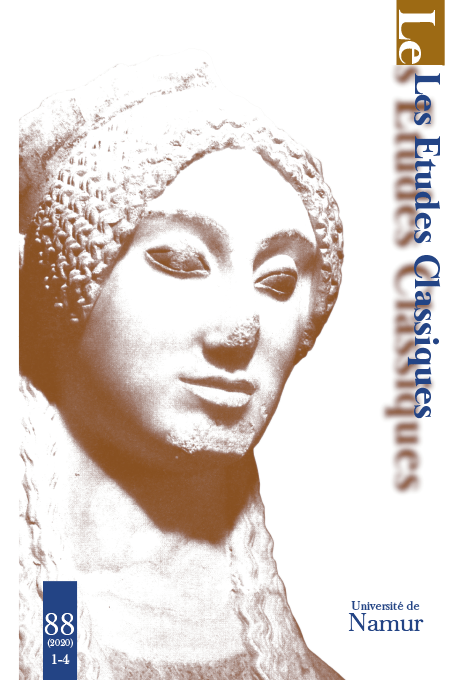 previous article in this issue previous article in this issue | next article in this issue  |

Preview first page |
Document Details : Title: L'identification du dernier romain dit «bigatus» Author(s): MARCHETTI, Patrick Journal: Les Études Classiques Volume: 89 Issue: 1-4 Date: 2021 Pages: 143-171 DOI: 10.2143/LEC.89.1.3290425 Abstract : Bigatus est le nom donné à une monnaie romaine, notamment par Pline et Festus. Les dictionnaires modernes l’identifient à un denier portant l’emblème d’un «bige», alors que le substantif dont le mot dérive, bigae, n’implique qu’une paire de chevaux. Les textes auxquels le mot est intégré ne laissent aucun doute à cet égard. Du réexamen des témoignages dérive la certitude que bigatus est un terme générique pour désigner le denier républicain, qui doit son nom à l’image des Dioscures choisie pour être le revers emblématique des deniers de seconde génération, ceux qui ont remplacé le quadrigatus. La date de création de ce bigatus, dont la plus ancienne mention en contexte se trouve chez Tite-Live (XXIII, 15, 15), peut alors être fixée fin 216 / début 215 av. J.-C. Bigatus is the name given to a Roman coin by Pliny and Festus. Modern dictionaries identify it as a denarius with the image of a two-horse chariot, while the noun from which the word derives, bigae, implies only a pair of horses. The contexts in which the word is used leave no doubt in this respect. A re-examination of the testimonies brings to light that bigatus is a generic term to designate the republican denarius and owes its name to the image of the Dioscuri chosen to be the emblematic reverse of the second generation denarii, which replaced the quadrigatus. The creation of this bigatus, the oldest textual mention of which is found in Livy (XXIII, 15, 15), can then be dated to the end of 216 / beginning of 215 BC. |
|


